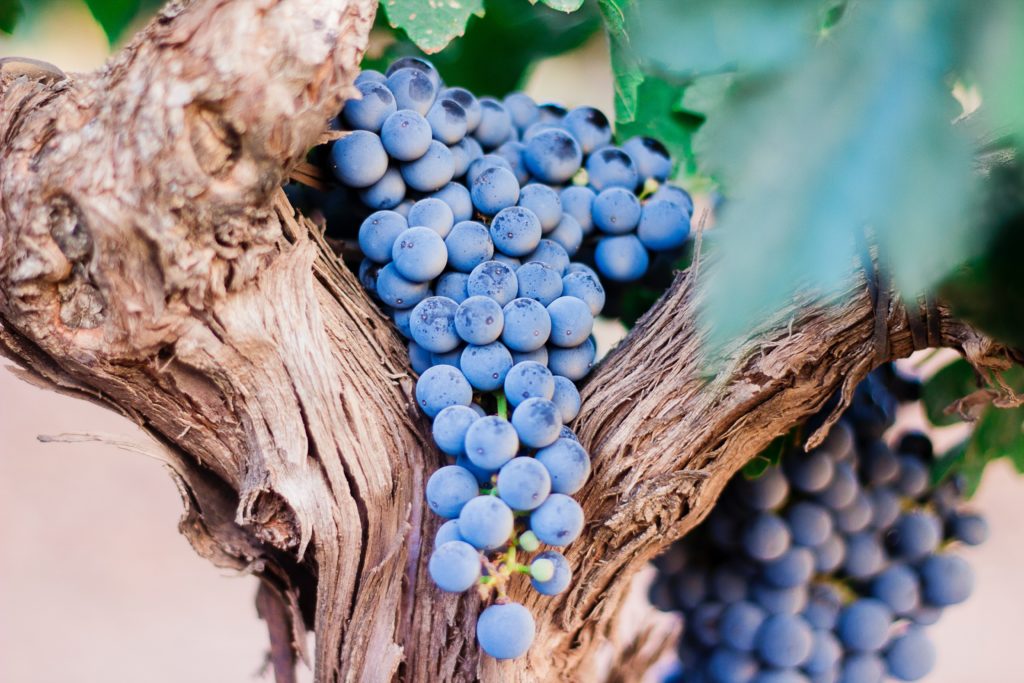How Red Wine Is Made
Episode #3 of the course Introduction to red and white wine by Paul Kalemkiarian
Last time, we learned the most popular red wine varietals. In this lesson, we’ll learn how winemakers vinify these grapes.
If the grape variety dictates the flavor of a wine, then the way in which the wine is made determines how good it is. There are a few different ways to make red wine. The winemaker’s real job is to get out of the way and let the character of what they have been given take over.
Traditional Red Wine
In traditional red winemaking, freshly picked grapes first pass through a crusher or stemmer-crusher. Depending on the type of wine desired, the winemaker can choose to leave the stems, which impart their tannin to the fermenting juice.
The crushed grapes then ferment in a vat, where a floating “cap” of skins and other solid matter has to be punctured regularly. Traditionally, winemakers would get into the vat and physically break this matter apart. Nowadays, this procedure is done mechanically by “punching down” (using a device to push down and break apart the solid cap) or “pouring over” (pumping the fermenting wine over the cap, submerging it).
During fermentation, the vat rises to 25-30°C or 77-86°F. Lower temperatures prevent fermentation, while higher temperatures may allow bacteria to turn the wine into vinegar. Fermentation is over when sufficient grape sugar has become alcohol. At this stage, depending upon a region’s winemaking regulations, cane sugar (not legal in California) can be added (in a process called “chaptalization”) to raise the alcoholic degree.
The primary alcoholic fermentation complete, the liquid (now called “free-run” juice or wine) is drawn off, and the remaining solid matter is passed through the press. The tannic, strong-flavored liquid from this second pressing is then mixed with the “free-run” wine, and this blend goes into tanks or barrels, where malolactic fermentation will take place.
Malolactic fermentation is the process by which the sharp, tart-tasting malic acid that is naturally present in fresh grapes is converted into the rounder, softer-tasting lactic acid. This often adds a level of complexity to a wine’s aroma and flavor.
“Fine” wine almost always spends at least a year in barrels, large or small, new or old. Burgundy, for instance, may spend 18 months in small, new oak barrels, which give the wine extra tannin. Spanish Rioja, by contrast, typically spends up to five years in large, old barrels.
While in tanks or barrels, the wine is “fined” with a fining agent, which drags suspended yeasts and other solids in the wine downward. Traditionally, egg whites were used as a fining agent, but modern techniques employ alternate agents such as bentonite and gelatin, among others (for a wine to be vegan, egg whites cannot be used).
After this, the wine is “racked,” which means it’s passed from one container to another, leaving the solids behind. The wine is then ready to be filtered and bottled.
Maceration Carbonique
Maceration carbonique, also called “whole berry fermentation,” is a slightly different winemaking method used for Beaujolais and many other “younger-drinkers.” In this process, grapes go straight into a closed fermentation vat, and CO2 is pumped in. Oxygen cannot get at the fruit, so full-scale fermentation cannot start, but within each grape, a kind of mini-fermentation takes place. After about a week, oxygen is allowed into the vat and the fermentation proper continues normally. Wines then go through malolactic fermentation and are bottled quickly.
Rosé
There are two main ways to make rosé—well, three, if you count blending. To make a rosé by blending, winemakers literally blend white and red wines together. Though this method is prohibited in making most PDO (Protected Designation of Origin) wines of Europe, it is actually the preferred method for making Champagne rosé.
Rosé de Saignée is made in much the same way as traditional red wine. The juice of red grapes is allowed to ferment for a short while in contact with the skins, taking on some—but not much—of their color. After a period of between a few hours and two or three days, the liquid is drawn off into a separate vat to finish fermenting.
Finally, the “direct pressing” method of making rosé—used, for instance, in making Rosé d’Anjou—is similar to the white winemaking process. Black grapes pass through the stemmer-crusher and the press, releasing some of their skin pigment en route. This imparts just a hint of color to the wine, producing very light-colored rosés.
That covers the basics of how red wine is made. In tomorrow’s lesson, we’ll take a look at the wine itself in the glass and learn what its appearance can tell us.
Recommended book
Wine Trails: 52 Perfect Weekends in Wine Country by Lonely Planet Food
Share with friends

